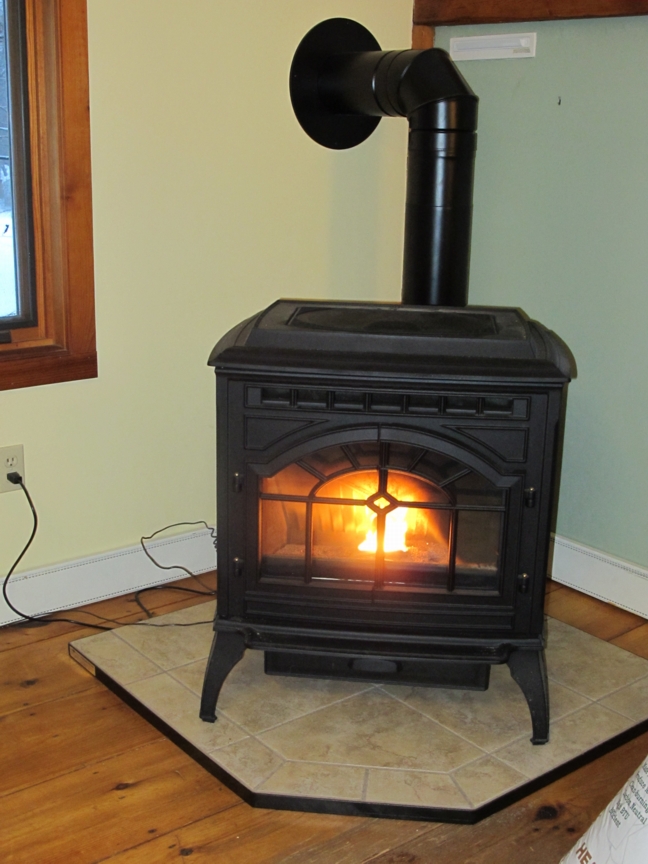
Image Credit: Alex Wilson
My wife and I have a sort-of love-hate relationship with our pellet stove. She leans more toward the latter, while I see the benefits outweighing the negatives.
In this column I’ll outline the primary advantages and disadvantages of pellet heating.
Advantages of wood pellet heating
Regional fuel. The fuel is — or can be — local or regional in origin. At a minimum it’s not fuel that’s coming from places where they don’t like us — like the Middle East. When I’m buying pellets, the source is a significant consideration. I’m willing to pay slightly more to have my pellets come from nearby plants in Jaffrey, New Hampshire or Rutland, Vermont.
Carbon-neutral. The life-cycle of wood pellet production and use can — and should — be close to carbon-neutral. With natural gas, propane, or heating oil we’re taking carbon that was sequestered underground millions of years ago and releasing that as a greenhouse gas into the atmosphere (where it contributes to global warming). When we burn wood pellets we’re still releasing about the same amount of stored carbon into the atmosphere, but that carbon was sequestered in the wood fiber over just a few decades, and if we’re managing our woodlands properly (replacing harvested trees with new ones) the entire life cycle results in almost no net carbon emissions.
Relatively clean-burning. Wood pellets are a lot cleaner-burning than cordwood. This is because pellet combustion is aided by a fan that supplies a steady stream of air to the burn pot. When I first start up my pellet stove — as the electric heating element heats up the pellets to start the combustion — there’s some smoke produced, but once the pellet stove is operating there is no visible smoke being generated. (This is a reason to set the temperature differential on the control relatively high — so that it won’t cycle on and off too frequently.)
Infrequent stoking. Pellet stoves have integral bins that can be filled every few days in cold weather, and most pellet boilers have stand-alone bins that hold several months’ worth of pellets. Regular stoking isn’t required — unlike with a wood stove. If a pellet stove is your only heating system in a space (as is the case with our apartment) how long you can go away depends on the energy efficiency of the building, expected outdoor temperatures, the volume of pellets your stove or bin holds, and the thermostat settings. With our pellet stove, we can go away for about three days in the coldest Vermont weather as long as I leave the thermostat set fairly low.
Convenient. With a pellet stove you don’t have to handle firewood. I’m sure I’ve cut, split, stacked, and burned a couple hundred cords of wood over the decades, and I know that it’s a lot of work. With pellet stoves you’re still handling the fuel — usually 40-pound bags of the rabbit-food-size pellets — but it’s more convenient than dealing with firewood.
Economical. Pellets are less expensive than heating oil, propane, or electric-resistance heat, so you can save money if you would otherwise use those fuels. You may save more money with a pellet stove by heating only a few rooms instead of the whole house — though there are often ways to do that with other heating systems as well.
Disadvantages of wood pellet heating
Noisy. There’s no getting around the fact that pellet stoves are noisy. There are typically two fans: one to supply combustion air to the burn pot and another to circulate heated air into the room. I find the noise annoying; my wife hates it. It’s certainly a far cry from a silent wood stove in our living room. There’s a Wiseway Pellet Stove that supposedly operates passively, but haven’t seen one in operation yet. Pellet boilers are noisy too, but they’re typically in the basement or a separate building, so it’s not a problem.
Electricity dependent. When you lose power a pellet stove or pellet boiler can’t operate (unless you have one of those new Wiseway stoves). This is an important consideration not only in rural areas prone to power failures, but also more generally in an age of global climate change with more intense storms forecast. With our own Quadrafire Mt. Vernon AE pellet stove, I bought a kit that allow me to operate the DC fans using a 12-volt automotive-type battery during a power outage. It won’t auto-start using the DC power, so you have to start it by hand with kindling or starter paste, but at least it can be used to keep a space warm when the grid is down.
Comfort. Pellet stoves don’t deliver radiant heat. I love pulling up a chair in front of our wood stove on a cold winter night and sitting down with a good book. That radiant heat seems to warm you inside and out. Pellet stoves — at least the one we have — don’t heat up in the same way and radiate heat. Nearly all the heat is delivered by fan-forced convection. It’s just not as pleasant.
Plastic bags. Unless you get pellets delivered in bulk you produce a lot of polyethylene plastic waste from the bags. The first two years we had our pellet stove I was able to buy bulk pellets that were delivered in reusable thousand-pound totes that sat on pallets. I had to carry the pellets upstairs in five-gallon pails, but at least I didn’t generate all that waste. Unfortunately, the company that had delivered those totes disappeared, and I had to switch to the more typical 40-pound plastic bags (which we reuse as trash bags). I believe that as pellet heating becomes more common, bulk delivery of pellets will become more available.
Complex. Unlike wood stoves, pellet stoves have moving parts that can wear out and that require maintenance. There are blowers, temperature sensors, an auger to deliver pellets, and other components. Most retailers recommend annual servicing, which can add significantly to the total operating cost of a pellet stove or pellet boiler.
Less control over the fuel. If you have a woodlot you can cut and split your own firewood. That’s not the case with pellets. Pellet factories use massive presses to extrude wood fibers through dies to create the pellets. Do-it-yourself pellets aren’t an option.
Not always cheaper. While pellets are less expensive than most other fuels, they may not be cheaper that natural gas or air-source minisplit heat pumps. Use our Heating Fuel Cost Calculator to compare costs per unit of delivered heat. In the Northeast, pellets typically track with heating oil — going up when heating oil prices spike, though generally remaining significantly lower. If you can order pellets in bulk rather than buying them in 40-pound bags, there may be some savings — but not all that much. And there have occasionally been shortages of pellets, driving prices up substantially.
The bottom line
Pellets are a mixed bag, but they offer enough advantages in many situations to warrant consideration. They provide a user-friendly option for relying on a relatively local, renewable fuel source. If Europe is any indication, the use of pellet heat in the U.S. is likely to increase significantly in the years and decades ahead.
Check out the high-performing, low-emitting pellet stoves that we’ve found in our GreenSpec section.
Alex is founder of BuildingGreen, Inc. and executive editor of Environmental Building News. He also recently created the Resilient Design Institute. To keep up with Alex’s latest articles and musings, you can sign up for his Twitter feed.
Weekly Newsletter
Get building science and energy efficiency advice, plus special offers, in your inbox.





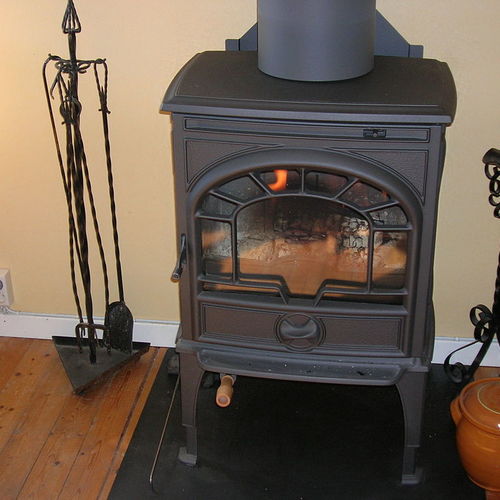
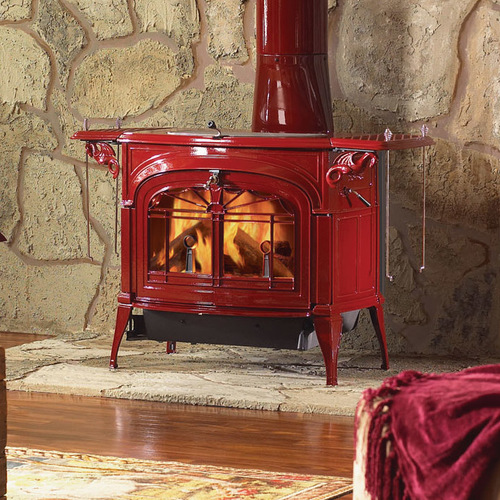
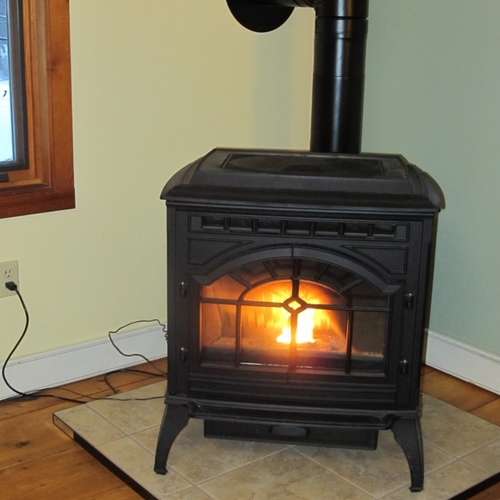
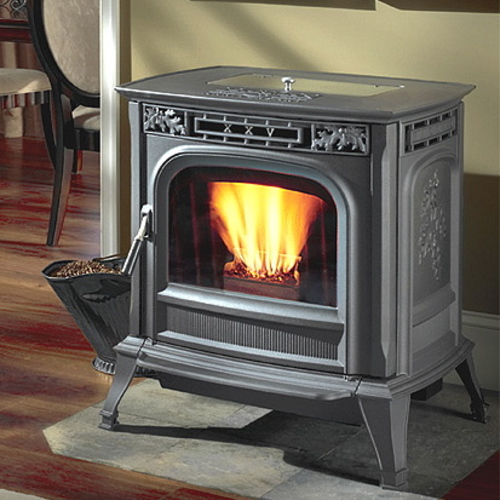






14 Comments
About the Middle East
Alex,
Thanks for the balanced discussion of the advantages and disadvantages of wood pellets. There is lots of good information here.
A small quibble: Your assumption that the Middle East is a place where people "don’t like us" makes me uncomfortable on several levels. First of all, I lived in the Middle East for seven years, and was received by the vast majority of people I met with very warm hospitality -- in fact, with more hospitality than the average foreigner is likely to receive in most locations in the U.S.
Second, this kind of "us/them" thinking is often associated with a lot of assumptions based on a philosophy of American exceptionalism. I doubt if that was your intention when you made the comment, but I think international understanding requires us to be careful when making generalizations about parts of the world where "people don't like us."
Passive stove, and
Passive stove, and interesting...
Radiant heat is indeed my preference too...
And I fully agree with Martin. All of our differences are great not bad, exceptional is a ridiculous crusades mentality.
But one US place that is very welcoming, Asheville, and N.C.. People literally pulled over to welcome us, and invite us to dinner, to clogging, and to move there. Best folks I ever met.
Experience
Having spent some time in the middle east (Egypt), I do agree that there were some friendly people. But I also saw a lot of hostility. To say that they "dont like us", is just honesty. Don't we have enough proof after 9/11, benghzi, beirut, Cairo etc.... ??
I do like the article and I understand the carbon neutral aspect of pellett/wood. But how does wood and pellets compare to natural gas in regards to particulate, Nitrous Oxide etc... Is there a point where the natural gas may in fact have less of an enviromental impact? Especially when considering that the wood that is not used, may be (somewhat) naturally sequestered?
And to a much larger issue, countries and areas that use wood as a primary energy source (Hati, Sahara region of Africa for example) are areas of enviromental and socital disasters. Are there any countries that use wood as THE primary energy source that are sustainable?
Response to Francis Robertson
Francis,
I think several countries in Europe -- notably Sweden and Austria -- are making extensive (and sustainable) use of firewood and wood pellets as fuel. Both countries have national forestry policies that ensure that firewood is cut in a sustainable manner.
Low emission cordwood heating
I think of pellet stoves as a bit more of an urban wood burning technology because of fuel access issues,for those with access to cord wood, phase 2 parlor stoves are a pretty good option on the lower end of the budget. On this site Masonry Heaters are often dismissed as unnecessarily expensive but 300 or so years on they are still the premium cord wood heating technology. Radiant fireplaces that burn cord wood with emission levels that rival or exceed pellet stoves without electricity or pellet manufacturing cost,(which can include the use of natural gas in the drying process). Add to this the built in thermal battery (masonry mass) which can carry the effect of the fire for 24 or more hours. Finally heaters are well matched to efficient homes because of their relatively low hourly BTU output which is somewhat self regulating, if the house does not require the heat it tends to slow it's release into the home.
I am a heater mason and home builder and we have found Masonry Heaters to be one of the most loved technologies that we provide our customers.
If you are interested in Masonry Heaters check out the website of the Masonry Heater Association of North America. http://mha-net.org/html/media.htm
Adding Radiant to Existing Pellet or other Wood Stove
What about adding a radiant loop with existing stoves. http://www.hilkoil.com is a company that sells a stainless steel coil designed to be retrofitted into a wood stove. There is little doubt that this would affect any EPA rating.
I'm looking at a radiant/solar/wood combination. The radiant loop would have a solar assist. The solar assist would be a Simple Drainback 80 gallon drainback tank with optional radiant port. This is a load side heat exchange system, meaning the water in the tank is the solar fluid. This is precisely the fluid I'd move into the floor. The radiant port feeds the floor loop from the heat exchange tank.
The wood stove option simply would supplement solar during the depths of winter. Just like the solar radiant loop, the water in the Simple Drainback tank would be diverted into a wood stove loop, then back to the tank. This wood heated water could then be passed into the radiant floor.
That's the idea. Crazy? Doable?
Careful about any modifcations... (ans. to Jeffrey)
Cutting in a Hilkoil or similar into an existing woodstove may create a hazard that didn't exist before the modifications. In many states it's explicitly dis-allowed, and the safety agency certifications are pretty thin/sketchy/absent on most retrofit coils. File it under "crazy", even though it's also sometimes "doable".
If you want a wood boiler or pellet boiler, they exist- most are European imports, but they work and work well. Okofen is now avaliable in the US an has ASME boiler certification and a range of sizes appropriate for single-family dwellings:
http://www.oekofen-usa.com/en-us/products/pellematic.html?PHPSESSID=f9eec32ad281205dc6660251122e95eb
But there are others, but many are way oversized compared to US home heating loads (particularly for high-R homes.)
Efficient log boilers
Like the article.
You can get residential scale log fired boilers from European manufacturers that claim 90%+ thermal efficiency on Lower Heating Value using logs. See Froling's WWW site, for example. This efficiency is comparable to pellet stoves. I haven't seen the emissions data for these log-fired systems but generally speaking, efficient wood systems burn cleanly. And they would have to meet European emissions standards. You would have to meet the manufacturer's specifications for the wood burnt (size, moisture content etc) to achieve optimum performance.
I've seen pellets delivered by pump from a truck in Austria. With an augur fed boiler the home-owner doesn't see any difference to using gas or electricity.
We have a real chicken and egg situation system with pellets in Australia. Little local manufacturing which means people are reluctant to buy pellet systems which means demand is low which means little local pellet manufacturing ...
David
Long-time pellet user
We've used pellets as our primary form of heat for over a decade now, and it has saved us thousands of dollars. I designed our Massachusetts house around a central pellet stove, which costs us around $800 a year to keep warm. Our neighbors who mostly use oil are currently spending around $2500 to heat their homes. Our house is well insulated, so it does a good job retaining heat.
The only thing I've had to do in ten years is to replace the igniter once. I do not consider the stove inconvenient to maintain, we clean out the ash bin about once a month. It heats very cleanly, at least in comparison to wood. In the dead of winter it burns about one 40 lb bag a day, and I consider carrying in the bag from the shed next to the house trivial. We have the two tons we need to heat for the winter delivered at the beginning of the season, and that's it.
Response to Jeffrey Morrow
Jeffrey,
Dana Dorsett says it's crazy -- and maybe it is. But I did it 22 years ago, and my woodstove is still working fine.
My woodstove is a homemade unit made by a local welder. I bought it used for $100. It's nothing fancy.
I drilled holes in the steel and installed a stainless-steel loop in the firebox. The loop is connected to an upstairs tank; the water circulates by a thermosyphon.
I have TWO pressure/temerature relief valves that I check regularly. Don't install valves in the thermosyphon loop (except the relief valves). These systems can be bombs.
My water storage tank is a stainless-steel SuperStor unit with a heat-exchange coil. The water in the tank circulates through the woodstove coil. The heat-exchange coil in the SuperStor tank is connected to a solar thermal system. The solar thermal system circulates fluid with a 12-volt-DC pump (an El Sid pump) powered by a small PV array.
The system works fine, but I am not supposed to advise anyone they can do it because it probably violates a lot of codes, and because my wood stove isn't EPA approved. Tinker at your own risk, and don't do anything you don't understand thoroughly.
If you want to go out and buy a European woodstove with hot water circulation, you can buy a Caluwe Konigsspitze model for just $6,495. That wood stove delivers 15,300 Btu/h to the room, and 35,700 Btu/h to a water heating loop that can be hooked up to a big water tank.
Particulate Matter
Another disadvantage is that pellet stoves and other wood burning appliances have higher particulate matter emissions than other alternatives. These small particle emissions can be breathed in and cause issues for people with respiratory issues. This is likely a more critical factor in dense urban areas where the exhaust has less opportunity to dissipate before someone breathes it.
I've had a pellet stove for several years and have generally been happy with it. I believe the advantages still outweigh the disadvantages in most circumstances.
Pellets and ME
Pellets are fine, but ME shows sad misunderstanding.
We used to be loved as champions of freedom. Most o the best ME universities were started by Americans. But our bias towards Israel which has allowed them to make serfs out of the Palestinians has soured the relationship. People do not like hypocrites.
Crazy BUT doable... (response to Martin)
You'll note that I did point out that it's doable. But where explicitly prohibited or even where it's not, junkyard-hacks on combustion equipment (no matter how nicely done) can affect the resale of a property or whether it can be insured. The fact that well-engineered fully tested & agency labeled systems now exist means you don't HAVE to void the agency label of a wood stove to get there. As much as us enginerds love a good hack, it isn't always in our best interests to use them.
A couple of decades ago (when you hacked your wood stove) ASME labeled wood or pellet boilers suitable for indoor use didn't exist, and wood stoves ran at 60% thermal efficiency in native mode. Several EPA rated woodstoves hit north of 80% efficiency as do most agency-labeled wood boilers. The difference in fuel use between a new wood boiler and a hydronic-hacked woodstove supporting the same load is substantial, and what might have made sense then may not now.
Caluwe Nano is probably a better fit for smaller or high-R houses than the Konigsptize but they have a reasonable range in their product line (not all have ASME labeling though.)
http://gasificationboiler.com/products/heaters/6-nano
Pellet Stoves
Nice discussion. I heat with wood, and understand and agree with all the surface carbon cycle comments regarding carbon neutral. Let me say leaving the trees there as a way of sequestering carbon . . . well, 1st, what will you use in place of wood for heat? Next, I guess we will have room for all those trees if we can figure out where to put the excess people, and not worry about growing food. Right now, in NY State, we grow 3 times more fiber than we cut! So we have the wood. Can we convert the entire nation to solar? Well, not in my daughter's lifetime.Even though it would be a good idea - the world uses what - 17 Terrawatts a day, and the sun "dumps" something like 64 Terrawatts a day on us - but when have you ever seen the political will to follow up on a good idea? (I'm still trying to do the math on the person from Mass that uses 40# a day and buys 2 tons a year - they only have 100 days of winter in Mass?) The problem with codes is the problem with bureaucratic agencies every where - I have to be careful, I work with agencies every day, but often they are the living example of the Peter Principle. Doable means exactly that - it doesn't necessarily mean crazy. Gasoline engines were crazy 120 years ago. We just passed the 50th anniversary of the Cuban Missile Crisis and one aspect that kept us at the brink of war AFTER Kennedy and Kruschki reached an agreement for several hours (days) was we didn't have satellite communication systems to tell the Russian ships to turn around - no cell phones (hard to believe?) So if Martin can gerryrig a system (and I tend to feel Martin engineered a system) then it can be made safe. I have a neighbor who has a firewood fired water boiler for a hydronic system that is no longer available. It is a beautiful and well engineered system. It has multiple overlapping safety features on the wood fired side. It has a backup system that uses propane (we don't have natural here - we're too rural and the gas companies won't install a line. What ticks us off is all the gas wells the companies put on our land if we have 50 acres and let them, because we have the gas below us.) The propane system is code compliant yet doesn't have half the safety features the wood fired side has. Someone mentioned particulates - there are particulates, and there are particulates. First, to be a human health issue, they have to be smaller than so many microns, or they won't get trapped in the alveoli of the lungs. So total particulate data on pellet stoves does not directly address health issues. We just went through a situation in New York where the DEC effectively outlawed outdoor wood fired boilers by instituting standards no manufacturer will try to meet. They had a series of public hearings where they presented no scientific evidence - no air models, no Dewey Downwash data, no downwind ground level concentration data, but they started with a 500 foot setback requirement (which some of us felt was a throwaway position) which they modified after the hearings to a 100 foot setback. Now, if there was real concern at the State level over particulates, then we wouldn't be arguing where to put the truck station for the Peace Bridge - we would have a 4 mile railroad between Buffalo and Ft Erie, unload the containers at each side, send the trucks on their way, pop the containers on the railroad flat cars and ship them the 4 miles across the river. We wouldn't have diesel trucks idling for 2-4 hours to pass over the border. The epidemiological data conclusively show the increased risk to seniors and infants for lung complications on Buffalo's lower West Side. I guess what I'm saying don't always put your trust in bureaucratic codes. And, like Martin, I'm NOT telling you to disregard or break the codes, just don't be surprised when they don't protect you. I guess I went on too long.
Log in or create an account to post a comment.
Sign up Log in